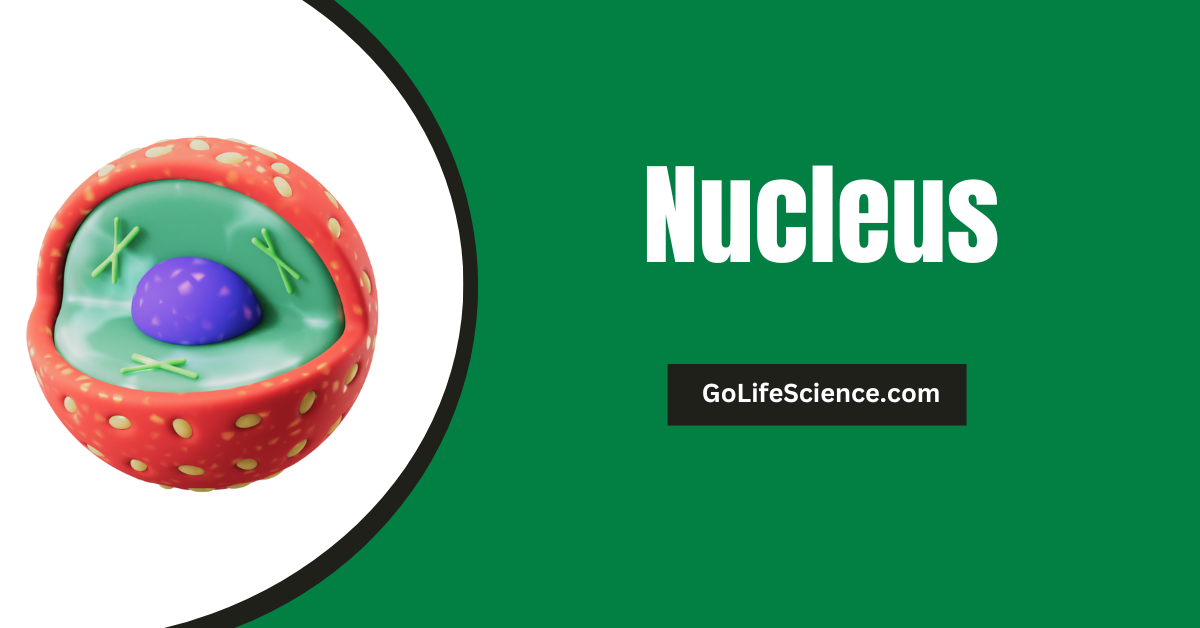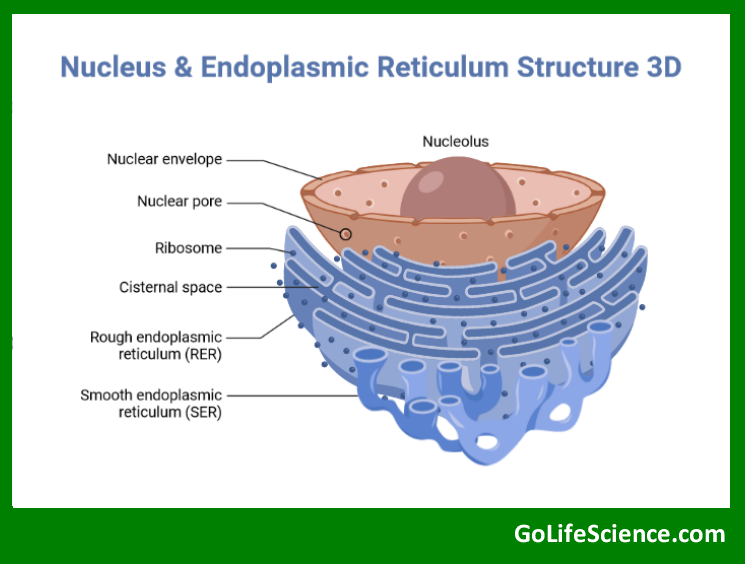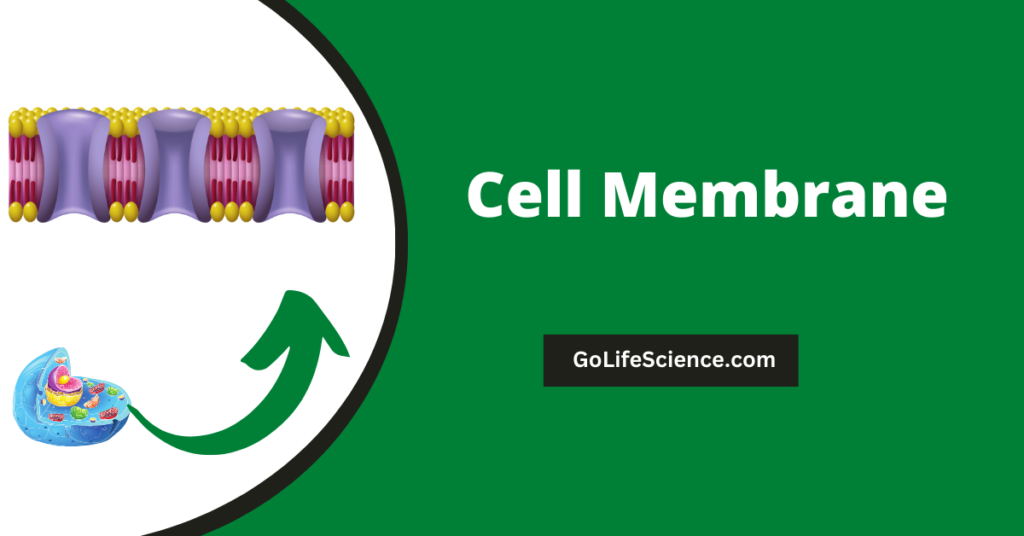
The nucleus is one of the most critical organelles in eukaryotic cells, often referred to as the cell’s control center. It plays a vital role in regulating cellular activities, storing genetic information, and ensuring the proper functioning of the cell. In this article, we will explore the structure of the nucleus, its functions, and its role in the cell. By the end, you will have a comprehensive understanding of the nucleus structure and function, as well as the parts of the nucleus that make it so essential.

Table of Contents
What is the Nucleus?
The nucleus is a large, pale, spherical, or oval body found in eukaryotic cells. It is surrounded by the cytoplasm and is the most prominent structure within the cell. The function of the nucleus is to house the cell’s genetic material, which is stored in the form of DNA. This DNA contains the instructions necessary for controlling cellular activities such as protein synthesis, cellular growth, and reproduction (both asexual and sexual).
The cell nucleus function extends beyond merely storing genetic information. It also regulates gene expression, ensuring that the right genes are activated or deactivated at the appropriate times. This makes the nucleus’s role in cell activities indispensable.
| Feature | Description |
|---|---|
| Size | Approximately 5 microns in diameter. |
| Volume | Occupies about 10% of the cell’s volume. |
| Location | Found in eukaryotic cells, surrounded by cytoplasm. |
| DNA Content | Contains the majority of the cell’s DNA (mitochondria and chloroplasts also contain DNA). |
| Nuclear Pores | About 100 nm in diameter; regulate molecular transport. |
| Number of Chromosomes | Humans have 46 chromosomes (23 pairs) in somatic cells. |
| Ribosome Production | Produces up to 10,000 ribosomes per minute in a healthy cell. |
Structure of the Nucleus
The structure of the nucleus is highly organized and consists of several key components. Understanding the parts of the nucleus is essential to grasp how it performs its functions.
1. Nuclear Envelope

The nucleus is surrounded by a double-layered membrane called the nuclear envelope. This envelope separates the nucleus from the cytoplasm and regulates the passage of materials between the nucleus and the cytoplasm. The nuclear envelope is a bilayer of lipids and proteins, with the outer membrane being continuous with the rough endoplasmic reticulum (RER). The space between the two layers is connected to the RER, allowing for the transport of proteins and other molecules.
2. Nuclear Pores
The nuclear envelope is perforated by nuclear pores, which are about 100 nm in diameter. These pores are essential for the function of the nucleus, as they regulate the movement of molecules such as RNA and proteins between the nucleus and the cytoplasm. Each pore is lined with a complex structure of proteins that ensures only specific molecules can pass through.
3. Nucleoplasm
Inside the nuclear envelope is the nucleoplasm, a gel-like substance that fills the nucleus. The nucleoplasm contains the cell’s DNA in the form of chromatin, as well as the nucleolus. It is rich in nucleotides and amino acids, which are necessary for the synthesis of nucleic acids and proteins.
4. Chromatin and Chromosomes
The DNA in the nucleus exists in two forms: chromatin and chromosomes. During most of the cell’s life cycle, DNA is in the form of chromatin, which consists of long, thin threads of DNA wrapped around proteins. When the cell prepares to divide, the chromatin condenses into shorter, thicker structures called chromosomes. These chromosomes are visible under a microscope and contain the genetic information necessary for cell division.
5. Nucleolus
The nucleolus is a spherical structure within the nucleus that plays a crucial role in ribosome production. It is composed of ribosomal RNA (rRNA) and proteins, which combine to form ribosomal subunits. These subunits exit the nucleus through the nuclear pores and assemble into functional ribosomes in the cytoplasm.
| Component | Description |
|---|---|
| Nuclear Envelope | Double-layered membrane separating the nucleus from the cytoplasm. |
| Nuclear Pores | Regulate the passage of molecules between the nucleus and cytoplasm. |
| Nucleoplasm | Gel-like substance containing chromatin and the nucleolus. |
| Chromatin | Uncondensed DNA wrapped around proteins; visible during interphase. |
| Chromosomes | Uncondensed DNA wrapped around proteins, visible during interphase. |
| Nucleolus | Non-membrane-bound structure responsible for ribosome production. |
Functions of the Nucleus
The nucleus functions are diverse and essential for the survival and proper functioning of the cell. Below are some of the key functions of the nucleus:
- Storage of Genetic Information: The primary function of the nucleus is to store the cell’s genetic material in the form of DNA. This DNA contains the instructions for building proteins and regulating cellular activities. The nucleus’s role in cell activities is to ensure that this genetic information is accurately replicated and passed on to daughter cells during cell division.
- Control of Gene Expression: The nucleus regulates which genes are turned on or off, a process known as gene expression. This ensures that the cell produces the right proteins at the right time. For example, during the synthesis phase of the cell cycle, the nucleus activates genes involved in DNA replication.
- Ribosome Production: The nucleolus within the nucleus is responsible for producing ribosomal subunits. These subunits are essential for protein synthesis, as they combine to form functional ribosomes. The nucleus function in ribosome production is critical for maintaining the cell’s protein synthesis machinery.
- DNA Replication and Cell Division: The nucleus plays a central role in DNA replication and cell division. During the synthesis phase of the cell cycle, the DNA in the nucleus is replicated in preparation for mitosis or meiosis. The nucleus ensures that each daughter cell receives an identical copy of the genetic material.
- Regulation of Cellular Activities: The nucleus controls various cellular activities, including growth, metabolism, and reproduction. It does this by regulating the expression of genes involved in these processes. The nucleus’s role in cell activities is to ensure that the cell functions efficiently and responds appropriately to its environment.
| Function | Description |
|---|---|
| Genetic Storage | Stores DNA, which contains the cell’s genetic information. |
| Gene Expression | Regulates which genes are turned on or off. |
| Ribosome Production | Produces ribosomal subunits in the nucleolus. |
| DNA Replication | Ensures accurate copying of DNA before cell division. |
| Cell Division Control | Coordinates mitosis and meiosis to ensure proper distribution of chromosomes. |
| Cellular Regulation | Controls cellular activities like growth, metabolism, and protein synthesis. |
Parts of the Nucleus and Their Functions
To fully understand the structure and function of nucleus, it is important to break down its components and their roles:
- Nuclear Envelope: It acts as a barrier between the nucleus and the cytoplasm, regulating the passage of molecules.
- Nuclear Pores: It allow the selective transport of molecules such as RNA and proteins between the nucleus and the cytoplasm.
- Nucleoplasm: It provides a medium for the suspension of chromatin and the nucleolus and contains the necessary building blocks for nucleic acid and protein synthesis.
- Chromatin and Chromosomes: It stores and organizes the cell’s genetic information. Chromatin allows for easy access to DNA during gene expression, while chromosomes ensure accurate DNA replication and distribution during cell division.
| Feature | Chromatin | Chromosomes |
|---|---|---|
| Structure | Long, thin, and uncondensed DNA threads. | Short, thick, and condensed DNA structures. |
| Visibility | Not visible under a light microscope. | Visible under a light microscope. |
| State | Present during interphase. | Present during cell division (mitosis/meiosis). |
| Function | Allows access to DNA for transcription. | Ensures accurate DNA distribution during division. |
- Nucleolus: It produces ribosomal subunits, which are essential for protein synthesis.
| Feature | Description |
|---|---|
| Location | Found within the nucleus. |
| Composition | Made of rRNA and proteins. |
| Function | Produces ribosomal subunits (large and small). |
| Ribosome Assembly | Subunits exit the nucleus and combine in the cytoplasm to form functional ribosomes. |
| Nucleolar Organizer | Region of chromosomes (e.g., chromosomes 13, 14, 15, 21, 22 in humans) that contains rRNA genes. |
The Nucleus Role in Cell Activities
The nucleus role in cell activities is multifaceted. It not only stores and protects the cell’s genetic material but also regulates gene expression, controls cellular growth, and ensures the accurate replication and distribution of DNA during cell division. Without the nucleus, the cell would be unable to function properly or maintain its genetic integrity.
Conclusion
The nucleus is a vital organelle that plays a central role in the life of a cell. Its structure of the nucleus is highly organized, with components such as the nuclear envelope, nuclear pores, nucleoplasm, chromatin, and nucleolus working together to ensure the proper function of the nucleus. From storing genetic information to regulating gene expression and producing ribosomes, the nucleus functions are essential for the survival and proper functioning of the cell.
Quick Revision Points
| Topic | Key Points |
|---|---|
| Nuclear Envelope | Double membrane with pores; continuous with the rough ER. |
| Nuclear Pores | Regulate molecular transport; allow mRNA and ribosomes to exit. |
| Nucleoplasm | Contains chromatin, nucleolus, and nucleotides for nucleic acid synthesis. |
| Chromatin | Uncondensed DNA; condenses into chromosomes during cell division. |
| Nucleolus | Produces ribosomal subunits; contains rRNA and proteins. |
| Chromosome Number | Humans: 46 (23 pairs); varies by species. |
Understanding the nucleus structure and function provides valuable insights into how cells operate and maintain their genetic integrity. Whether you are studying the parts of the nucleus or exploring its role in cell activities, the nucleus remains a fascinating and critical component of eukaryotic cells.
By optimizing this article with keywords such as function of nucleus, nucleus function, nucleus structure, cell nucleus function, structure of nucleus, and nucleus role in cell, we aim to provide a comprehensive resource for anyone seeking to understand this essential organelle.






